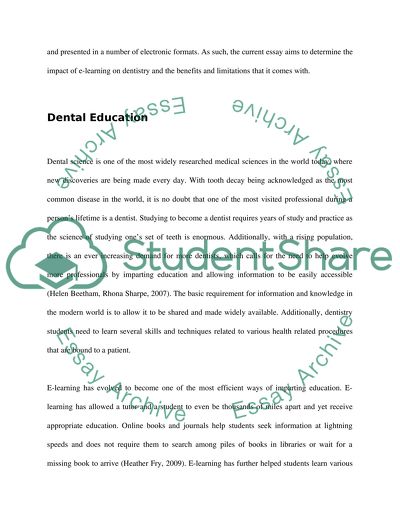Cite this document
(“E-Learning in Dental Education Essay Example | Topics and Well Written Essays - 2000 words”, n.d.)
E-Learning in Dental Education Essay Example | Topics and Well Written Essays - 2000 words. Retrieved from https://studentshare.org/education/1553950-evaluating-the-benefits-and-limitations-of-e-portfolios-and-e-learning-for-dental-professionals-in-general-dental-practice
E-Learning in Dental Education Essay Example | Topics and Well Written Essays - 2000 words. Retrieved from https://studentshare.org/education/1553950-evaluating-the-benefits-and-limitations-of-e-portfolios-and-e-learning-for-dental-professionals-in-general-dental-practice
(E-Learning in Dental Education Essay Example | Topics and Well Written Essays - 2000 Words)
E-Learning in Dental Education Essay Example | Topics and Well Written Essays - 2000 Words. https://studentshare.org/education/1553950-evaluating-the-benefits-and-limitations-of-e-portfolios-and-e-learning-for-dental-professionals-in-general-dental-practice.
E-Learning in Dental Education Essay Example | Topics and Well Written Essays - 2000 Words. https://studentshare.org/education/1553950-evaluating-the-benefits-and-limitations-of-e-portfolios-and-e-learning-for-dental-professionals-in-general-dental-practice.
“E-Learning in Dental Education Essay Example | Topics and Well Written Essays - 2000 Words”, n.d. https://studentshare.org/education/1553950-evaluating-the-benefits-and-limitations-of-e-portfolios-and-e-learning-for-dental-professionals-in-general-dental-practice.


